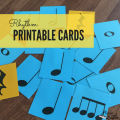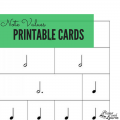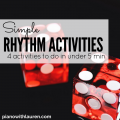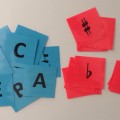I have to admit that sometimes I have gone to music conferences and have been sold on elaborate music games.
Then I get back to my studio, read the instructions, and give up.
When it comes to playing games with students, keep the games as simple as possible. You don’t want to spend valuable lesson time just explaining how a game works.
I keep a set of these simple rhythm cards at my studio. I can do all kinds of simple games with my students.
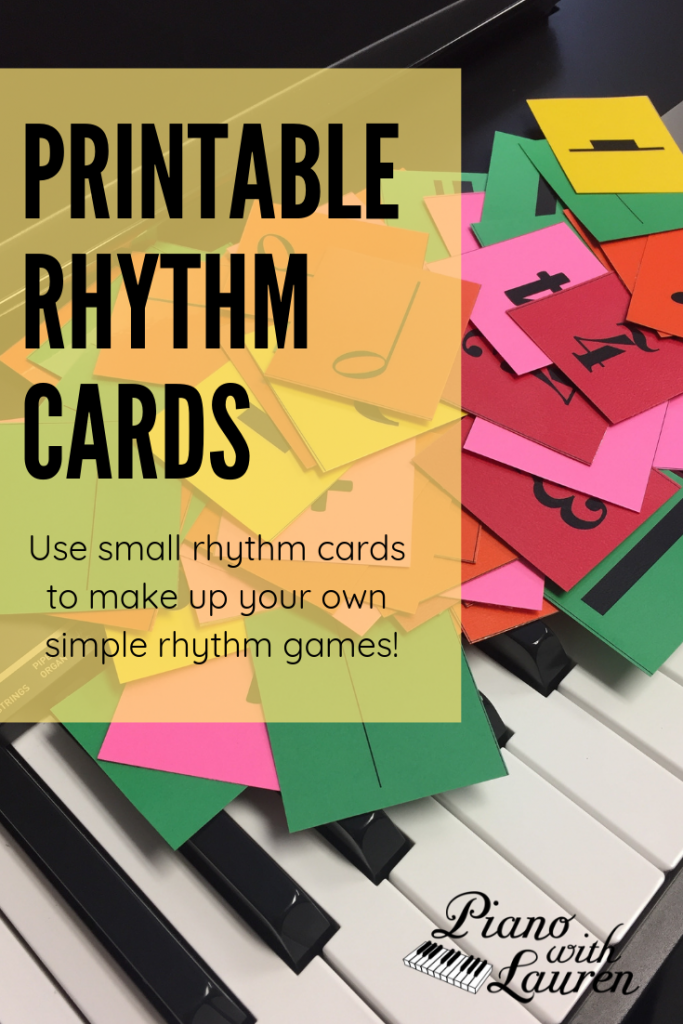
There’s a free version here. And an upgraded version here.
The upgraded printable rhythm cards include:
- Note values (quarter, half, dotted half, whole, dotted quarter, eighth, 2-8ths, 4-8ths)
- Rest values (quarter, half, whole, eighth)
- Bar lines and double bar lines
- Time signatures
- Numeric values (1/2 – 8)
- Math signs (+ – =)
I print each category on different colors of paper so I can easily separate the cards. Then I laminate them to make the cards durable.
Here are 10 ways to use the cards. I love to finish up the last 5 minutes of a lesson with a quick little game.
- Have students make up a rhythm using the notes and rests.
- Teach students about time signatures. Use the bar lines to make rhythms.
- Give the student a number and ask him to put down one note that is equal to that value.
- Give the student a number and ask him to put two notes that are equal to that value.
- Use a time signature and make measures that are missing beats. Ask the student to put down one note to complete the measure.
- Ask the student to complete a measure with one rest.
- Use note values and the math symbols to create a math problem. Ask the student to answer the problem with a numeric value.
- Create math problems for the student to complete with a note value.
- Create two rows of rhythms to tap with both hands. Right hand notes on the top & left hand notes on the bottom.
- Ask the student to make a math problem for you to answer.
All of these quick activities can be done with a partner or a group class. The possibilities are endless!
Check out the upgraded printable rhythm cards here.

Lauren teaches piano to students of all ages. She enjoys creating resources for her students and teachers. She is the author of Ready for Theory®. For personalized help, check out the consultations page for teachers.

